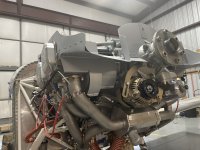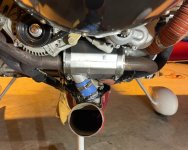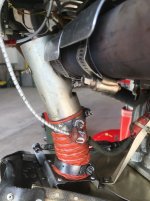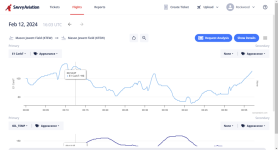It might depend on what type carb heat muff you have on your exhaust pipe(s). I’ve had carbs on 5 of my 6 RV’s and 4 of those 5 carbed birds had the original Vans half open tube strapped to one exhaust pipe on the Vetterman exhaust system. Those ones showed no RPM drop during run up when checking carb heat. Two of those had a carb temperature probe, one on a GRT EFIS/EIS system and one on a Garmin system. Neither of those two with carb temp indications worked. Carb temp didn’t change when checking carb heat. In fact, they usually indicated a negative temperature, even in the summer when it was 90* outside and the airplane was sitting on the ground running. However, my new airplane, an RV6, has the newer carb heat/cabin heat muff (shown below), and my carb heat check on run up shows a 60-80 RPM drop, so it is definitely doing something. I don’t have a carb temp probe on this one because I just haven’t had good luck with them. That being said, I’ve never had carb ice on an RV, and I use carb heat when in potential icing conditions, so even the original open tube CH pipes are probably working. Normal updraft Lycomings don’t have as much propensity for carburetor ice as some other engines, but it does happen, so built per plans and operated IAW Lycoming recommendations you should be safe.








